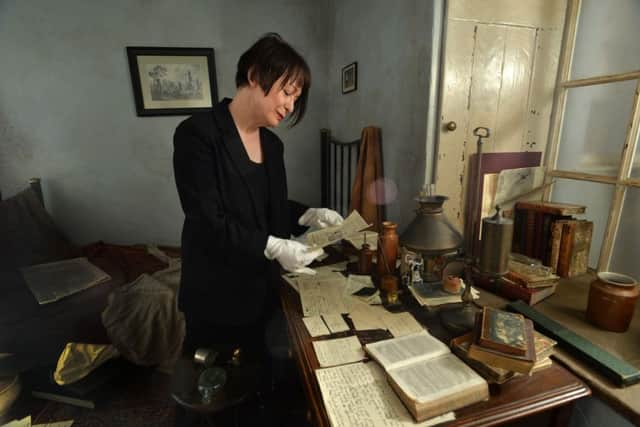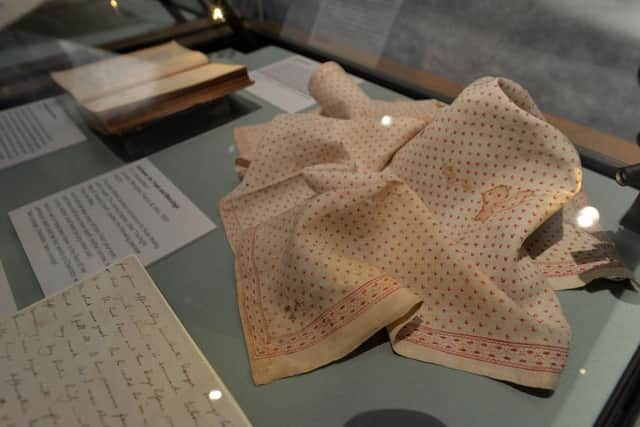How Anne Brontë is being reinvented in Haworth on her 200th birthday
Anne Brontë would have been 200, and at the parsonage on the Yorkshire moors that was her family home, they brought out the cake and champagne.
But there was an ulterior motive. The youngest and most physically frail Brontë sister was also, according to legend, the least talented.
Advertisement
Hide AdAdvertisement
Hide AdIt was a myth put about by her sister, Charlotte, and the museum dedicated to their memory would now like to set the record straight.


Its staff used the anniversary to preview a new exhibition on Anne’s life and work, which will open in a fortnight.
“People are going to be surprised. It’s like there’s been a big conspiracy in the past to portray her as gentle and long-suffering when all the evidence suggests a highly intelligent women – equally talented but determined to do something different with her writing,” said Ann Dinsdale, principal curator at the Parsonage Museum at Haworth.
“She was less hooked on Byron and the romantics. She wanted to have a moral impact, to do some good in the world.”
Advertisement
Hide AdAdvertisement
Hide AdAnne’s signature novel, The Tenant of Wildfell Hall, concerned a woman trapped in an abusive marriage. When her husband’s drunkenness starts to affect on their young son, she runs away and takes the boy with her – an act that would have been illegal at the time.


Its uncompromising and often violent nature caused one reviewer to remark that it was unfit to be put in the hands of young ladies. Others considered it coarse and brutal,
“It offended upper-class people because they were the ones behaving badly in the book. It wasn’t about poor working people,” Ms Dinsdale said.
In common with the works of her sisters, Anne’s novel was published under an androgynous pseudonym, but the time of her death in May 1849, aged just 29, the Brontës’ identity was starting to become known, and Charlotte considered it her mission to protect her late sister’s reputation, with a carefully written biographical note.
Advertisement
Hide AdAdvertisement
Hide Ad“She was trying to defend Anne by over-emphasising her gentle, quiet nature and trying to suggest that she didn’t really understand what she had done,” Ms Dinsdale said.
“She presented her to the world as nun-like and lacking in originality. That’s the notion we are challenging.”
Charlotte suggested that Anne’s choice of subject had been “a mistake”. In fact, said the curator, she had written about what she knew – the behaviour she had seen in Haworth.
Her sister’s attempt to rewrite her legacy did not end with her eulogy. She withdrew Wildfell Hall from circulation and edited Anne’s poetry, altering the work to fit her new narrative. When the novel reappeared it was in a heavily abridged form.
Advertisement
Hide AdAdvertisement
Hide Ad“Charlotte presented to the world this meek, gentle young sister,” Ms Dinsdale said.
“But I think Anne would have been pleased with the status that Wildfell Hall has now achieved. And I think the exhibition will draw a new audience to her.”
Anne died and is buried in Scarborough, where she hoped the weather would do her good.
At the time of her death, The Tenant of Wildfell Hall was the second best-selling Brontë novel. Only Jane Eyre was more popular. But some of the editions on sale today have not reinstated the original text and retail the wholesale cuts instituted by Charlotte.
Advertisement
Hide AdAdvertisement
Hide AdThe new exhibition, which opens on February 1 and runs all year, presents the manuscript of Anne’s last poem alongside Charlotte’s printed versions. It also includes Anne’s last, poignant letter in which expresses the hope that God will spare her from what is now thought to have been pulmonary tuberculosis.
The Parsonage Museum is closed during January but opened its doors briefly for yesterday’s birthday celebration.